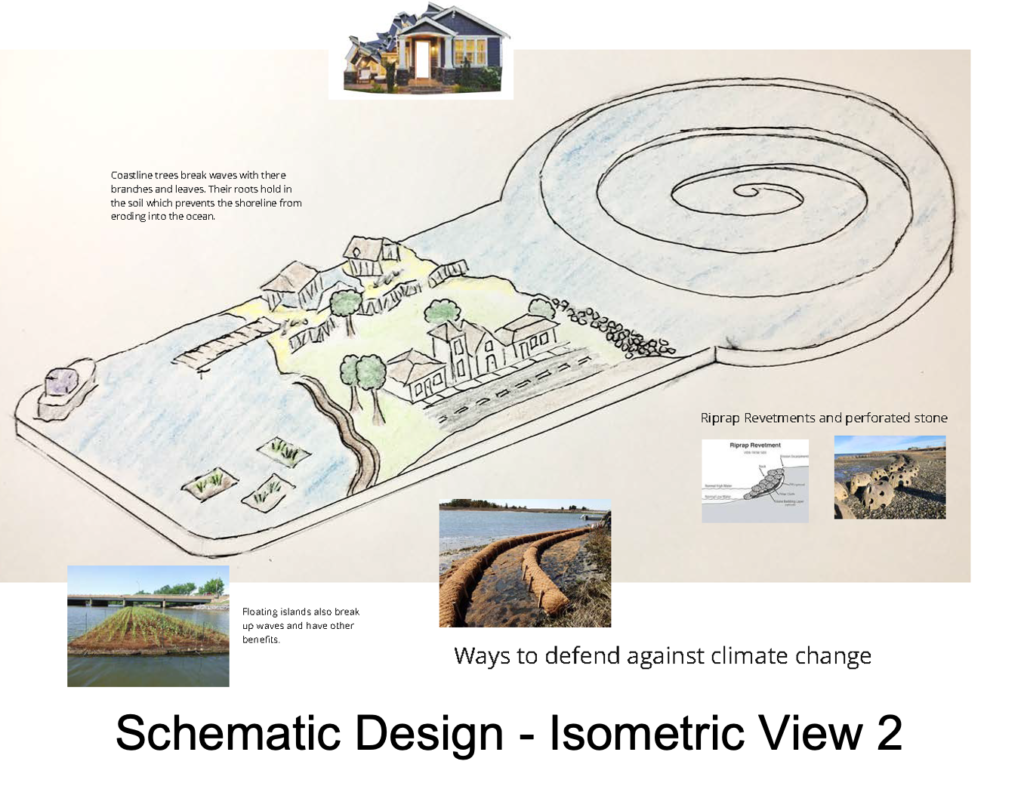WHSAD has partnered with Two Trees, a realtor and management company in Brooklyn, to help design a temporary mini golf course as well as an urban farm just north of Williamsburg’s Domino Park at North 1st St & the East River. WHSAD, however, wasn’t the only group involved in the design as the project is a collaboration between many local artists, not for profit organizations, and climate change activists to all create elements of the course.
The 15,000 square foot 18-hole miniature golf course at the site of the proposed River Ring project is meant to be a golf course with the theme of climate change and humans overall impact on the environment. The name of the course is “Putting GREEN” and while ticket prices are still to be determined, the course is on track to be opened this summer at affordable prices for all community members. All proceeds from the course are meant to be put towards the community. According to the Two Trees CEO, Jed Walentas, “We’re thrilled to build these spaces at no cost to taxpayers, with all proceeds going straight back to the organizations who are on the ground every day fighting this existential crisis.” Links to articles about the project have appeared in both Brooklyn Paper and TimeOut:.
To speak more about WHSAD’s experience working with Two Trees, here’s an interview with Junior, Lawrence Pierre, who was tasked with designing a hole for the golf course.
1. What did you work on, and how did you get involved.
I had the opportunity to work on a design proposal for a mini golf hole for a climate change project in Williamsburg. The hole is meant to be fun but also informative about the effects of climate change and methods of water mitigation, specifically in waterfront neighborhoods. I was motivated to make an enjoyable course and a course that pushes people to take action in stopping or at least slowing down the effects of climate change.
2. What did you find particularly interesting about the work?
While conducting research on waterfront resiliency, it was interesting to see all the ways storm surges and erosion can be mitigated. Some of the solutions to mitigate storm surges and erosion include floating wetlands, rip rap revetments, and reef balls.
3. What were some challenges you encountered in the process?
After I submitted the project to Bridget McCrum from Two Trees, she gave me feedback and clarified what they are looking for in the design. I had found myself focusing too intensely on the increase in erosion and floods climate change causes, rather than the designs to mitigate or prevent it.
4. How did mentors assist you in realizing your vision for the project?
Mr. Rodriguez and Ms. Moos helped make the project presentable. They also helped with research such as mangrove trees and how they can break up waves especially during a storm storm surge (link to video on simulated mangrove trees). My classmates Raymundo Gomez, Kevin Hernandez, and Deselle Thompson also helped with ideas and research. One idea we had was to simulate a flooded neighborhood on one side of the hole and an unscathed neighborhood on the other side hole. The unscathed side would have all the water mitigation plants and structures while the destroyed side has nothing.
5. What did you learn working on the project and how could you apply these skills in future work?
I learned much about climate change. For example, I learned that rip rap revetments (layer of stone placed over fabric across coastline) are a good way to mitigate shoreline erosion as they can last for 50+ years, according to Water Resilience Program. I can use what I learned from this project to design even more informative/ sustainable structures in the future.
6. How did your classes at WHSAD help you on this project?
I used a program called Miroboard that I had recently been introduced to by my Architecture and Design teacher, Ms. Moos. This program helped me, my classmates, and my teachers communicate our research, ideas, and designs.
7. What are you looking forward to about golfing the hole you created?
I’m looking forward to seeing my design on paper come into life. I’m also looking forward to how the architects at Two Trees refine the project into something that is more informative and fun.






